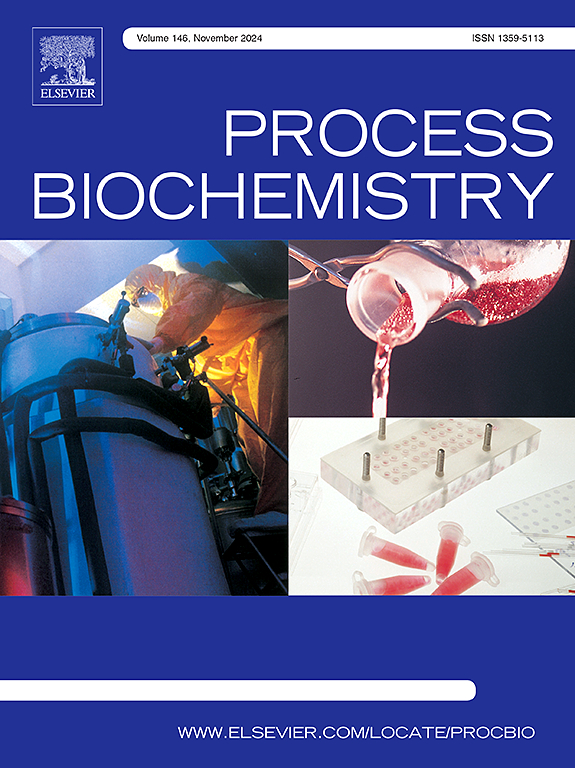Photosynthetic activity and biocomponent production of Isochrysis galbana regulated by manipulated light quality
IF 4
3区 生物学
Q2 BIOCHEMISTRY & MOLECULAR BIOLOGY
引用次数: 0
Abstract
To investigate how light quality regulates the biocomponent production and photosynthetic activities of Isochrysis galbana, monochromatic light of green (G), red (R), blue (B), and combinations of R and B (R: B=n: m, nRmB, n + m=7) were compared with achromatic white light (W) in this study. The results showed that B and blue-dominant light (1R6B-2R5B) reduced pigment concentrations, growth rates, and production of biomass and biocomponents compared to W, whereas G matched W. R had lower growth rate and biomass production than W but achieved the highest contents of carbohydrate, protein, and pigments. The combination 6R1B produced the highest biomass (480.28 mg/L), protein (99.19 mg/L), and lipid (213.44 mg/L), while 4R3B toped carbohydrate production (70.39 mg/L). G showed the highest energy dissipation and lowest photosynthetic parameters, whereas R had the highest electron transfer efficiency and pigment content. Mechanistically, red and blue combinations enabled the reaction center (RC) achieved the high electron transfer energy and low dissipated energy despite low absorption energy. Red-dominant combinations further offset the limit of absorption, boosting photosynthetic performance and biocomponent production. These findings clarify the regulatory role of light quality on algal photosynthesis and guide artificial irradiation for I. galbana biocomponent production.
光质量调控下galbana等chrysis的光合活性和生物成分生产
为了研究光质量如何调节galbana Isochrysis的生物成分生产和光合活性,本研究将单色光(绿色(G)、红色(R)、蓝色(B)以及R和B的组合(R: B=n: m, nRmB, n + m=7)与消色光白光(W)进行了比较。结果表明,与W相比,B和蓝优势光(1R6B-2R5B)降低了色素浓度、生长速率、生物量和生物组分产量,而G与W匹配的W比W生长速率和生物量产量低,但碳水化合物、蛋白质和色素含量最高。组合6R1B的生物量(480.28 mg/L)、蛋白质(99.19 mg/L)和脂质(213.44 mg/L)最高,而组合4R3B的碳水化合物产量最高(70.39 mg/L)。G的能量耗散最高,光合参数最低,而R的电子传递效率和色素含量最高。从机理上讲,红蓝组合使反应中心(RC)在低吸收能的情况下实现了高电子转移能和低耗散能。以红色为主的组合进一步抵消了吸收的限制,提高了光合性能和生物成分的生产。这些研究结果阐明了光质量对藻类光合作用的调控作用,并为人工辐照生产半藻生物成分提供了指导。
本文章由计算机程序翻译,如有差异,请以英文原文为准。
求助全文
约1分钟内获得全文
求助全文
来源期刊

Process Biochemistry
生物-工程:化工
CiteScore
8.30
自引率
4.50%
发文量
374
审稿时长
53 days
期刊介绍:
Process Biochemistry is an application-orientated research journal devoted to reporting advances with originality and novelty, in the science and technology of the processes involving bioactive molecules and living organisms. These processes concern the production of useful metabolites or materials, or the removal of toxic compounds using tools and methods of current biology and engineering. Its main areas of interest include novel bioprocesses and enabling technologies (such as nanobiotechnology, tissue engineering, directed evolution, metabolic engineering, systems biology, and synthetic biology) applicable in food (nutraceutical), healthcare (medical, pharmaceutical, cosmetic), energy (biofuels), environmental, and biorefinery industries and their underlying biological and engineering principles.
 求助内容:
求助内容: 应助结果提醒方式:
应助结果提醒方式:


